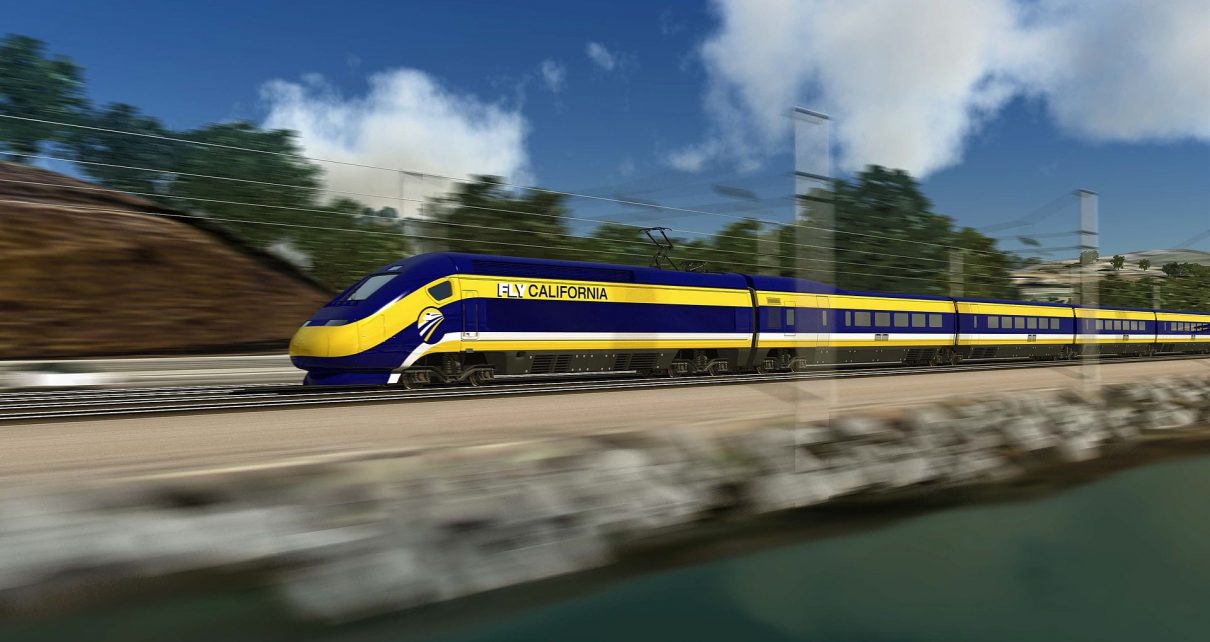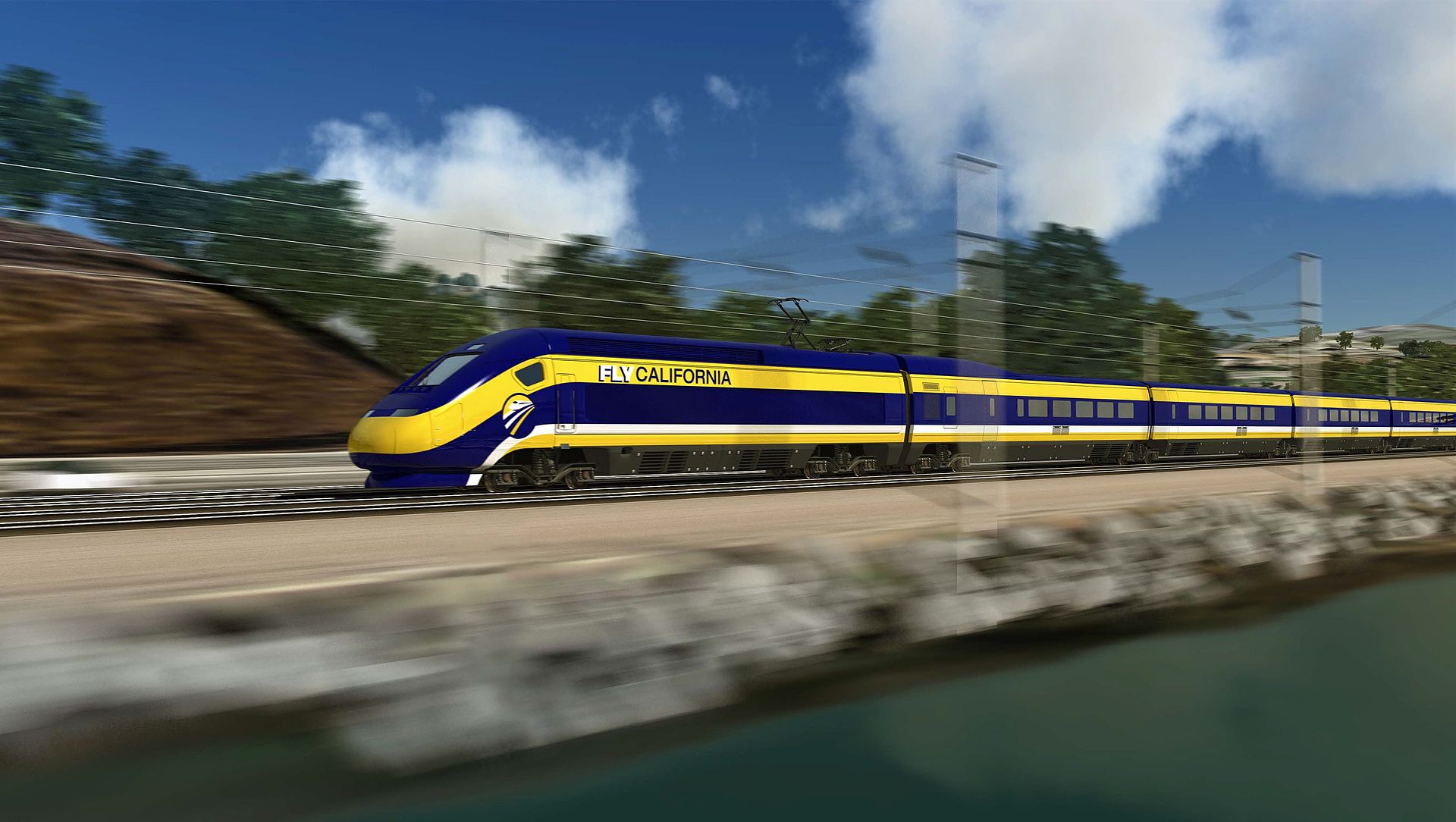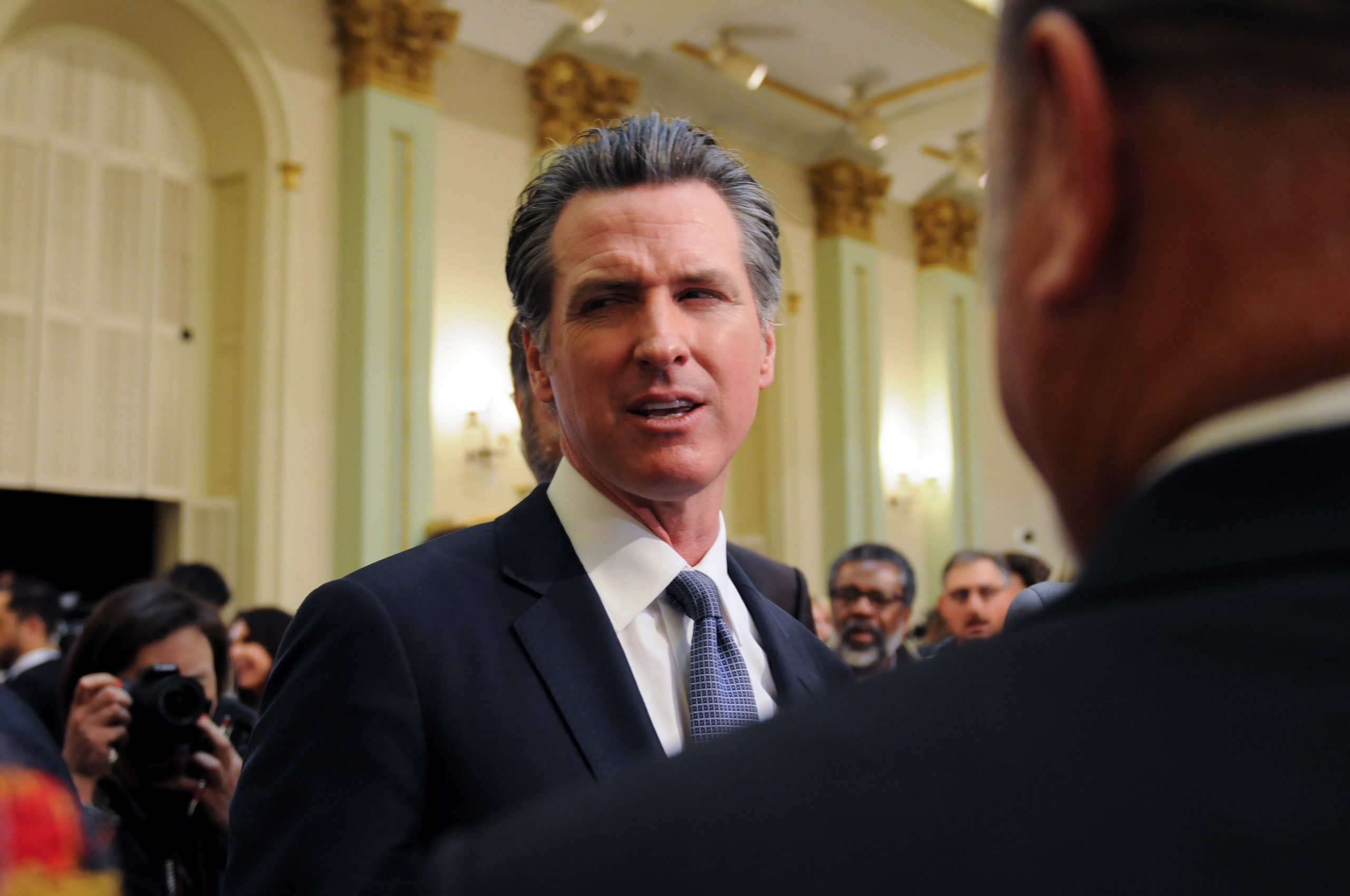
High Speed Rail train, artists rendering. (Photo: CHSRA.ca.gov)
California High-Speed Rail Board Approves Construction of Lines into Bakersfield, Merced
New lines will stretch 52.4 miles, cost over $85 million
By Evan Symon, August 18, 2022 2:30 am
The California High-Speed Rail Authority Board of Directors announced on Wednesday that they approved the continued construction of the network into both Merced and Bakersfield.
Originally estimated to cost $33 billion in 2008, costs of the high speed rail system have ballooned to $98 billion, then were cut to $68 billion, and now are back at $113 billion. Completion dates have also been continuously delayed, with the original goal of having the system go from San Francisco to Los Angeles by 2028 to well into the 2030’s for a partial completion. Despite numerous setbacks, and more Californians calling the plans into question, construction on the Bakersfield to Merced leg have continued on for the last several years, with overall support for the program still just above 50% in the state.
That, along with recent infusions of federal funding, led to the announcements of continued construction on Wednesday. This includes the $41 million, 33.9 mile section of the Merced to Madera extension design contract and the $44.9 million, 18.5 miles Shafter to Bakersfield leg design contract.
“Taken together, these contracts bolster the Authority’s effort to have high-speed trains operating in the heart of California by the end of the decade,” said Authority Chairman Tom Richards. “These contracts demonstrate our ability to leverage lessons learned from past contracts, increase project readiness and prepare for continued progress on this transformative project.”
In addition, environmental work finalization for the San Francisco to San Jose leg is expected to wrap up on Thursday, potentially leading to continued construction further North in the future.
“It’s good that California is really starting to get a leg up on construction, but compared to other programs, California is just taking too long and costing too much for many,” noted German passenger railroad consultant Horst Bauer to the Globe on Wednesday. “The High Speed rail team there really needs to set a hard budget celling and a hard end date. They have delayed too much and kept moving the budget line too high. And that’s if they want to keep it at the current support level. And that’s not even going into if people will actually ride it and even more infrastructure connecting airports to rail and public transit terminals.”
“The feeling in the industry is that they still won’t be able to do this or give everything they promised. And right now we don’t even have any train testing or a completed viable stretch. After 14 years. You can see why so many people in the state don’t want this. Do you know how long it took to build the transcontinental railroad, from first construction? Six years. And it was much longer and first started when the American Civil War was still happening. German electrical upgrading? Only a matter of years. Same with France and Japan. But in California they are so far behind every other major project. These approvals today are encouraging for supporters, but there is still just so much more to do. And you can be sure costs will go up again, as well as the completion date being moved again.”
More announcements from the California High-Speed Rail Authority are expected later this year.
- Bill to Require Law Enforcement Disclosure if AI Was Used To Help Write Reports - August 7, 2025
- Gov. Newsom Files FOIA Request To ‘Expose True Cost’ Of L.A. Federal Troop Deployment for Anti-ICE Riots - August 6, 2025
- California Redistricting: How Newsom’s Plan Will Demolish Hard Fought GOP Gains - August 6, 2025





The California High-Speed Rail Authority Board of Directors need to get in touch with reality. Time to cut our losses. Even people who thought this project was a good idea in 2008, have noticed it was a horrible mistake.
If the cost has increased almost a billion $ in 14-yrs, what’s another 10-yrs gonna cost us?
It is not designed to ever “finish”. It is a gift to unions for the loss of the Bay Bridge fabrication. The BS Train is a union pork “retirement” project that will never turn a nickel of profit unless they shut down commercial air… and I wouldn’t put it past them!
Unions and contractors are dancing on air for their good fortune, a guaranteed future for as far as one can see! All on the backs of CA and US taxpayers! WHAT A DEAL!!!
I agree this project is a mess, but I hope that it will cause reforms to things like CEQA. High Speed Rail was the subject of Richard Traynor’s book going back to the first pay-to-play attempt in 1982, but to this day, it makes a-lot of sense to build. They just are not doing it right. California is a state that built the most amazing water infrastructure in the world, and we could do the same with rail.
If you want to be impressed, there’s a guy named John who is a conductor on a Class I freight railroad who did a drone flyover of 119 miles of the CAHSR corridor in the valley. https://www.youtube.com/watch?v=VgIa4uAnVVw&ab_channel=TheFourFoot
I think they keep building as a way to keep federal funding. Remember, they swap the federal funds into state bonds to pad the state budget.
California needs a top to bottom audit. No one knows where the money is going!
The California High Speed Rail Project is a grotesque waste of money. This is a projects that goes from “somewhere” to “nowhere”…..need to cut loses now and mothball the project immediately. California needs to spend money on reservoirs and desalinization plants which will help voters…..
The most powerful business interests are related to automobiles, travel and transport: finance, insurance, manufacturing, marketing and sales, construction of roadways and car-dependent housing, pay to park central districts and entertainment venues, etc etc. Last on the list is petroleum industries because the other interests don’t care how cars and trucks are powered. They care only that people have no choice but to drive. Any practical means to reduce cost and objectionable impact of rail transit infrastructure is inexplicably ignored.
Two light rail proposals were voted down in Portland – the 1998 N/S MAX and the 2020 SW Corridor MAX extensions because of patently absurd engineering, unacceptably high impact, low productivity, traffic hazards, accident rating and their ‘severity’ worsened, (more accidents, more multi-car pileups, more passenger and pedestrian fatalities). The worst engineered segments of these light rail extensions were in the jurisdiction of ODOT, along I-5 through North Portland and state Hwy 99W. Local media misled the public to believe the only problem was their cost. When concerns over money lead public discussion, there are those who are in it only for the money. Current ODOT director Kris Strickler should be removed from office.